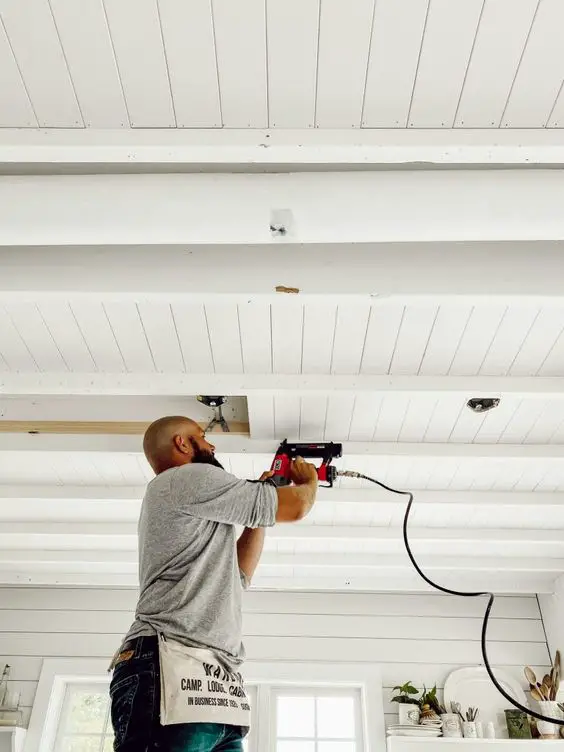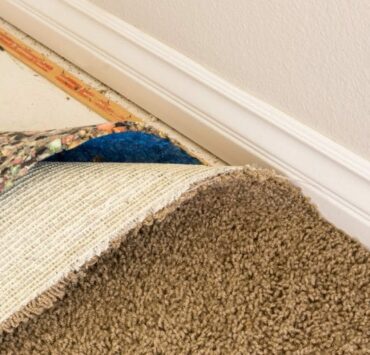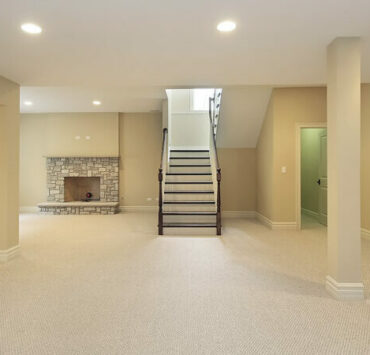The basement ceiling is one of the most important aspects of basement finishing and/or renovating. Due to the large surface area it occupies, the ceiling carries a chunk of the visual weight of a basement. This makes it the perfect area to focus on to give your basement a distinct aesthetic.
Ofcourse, choosing a basement ceiling type needs to be aesthetically pleasing and practical. There are many types of basement ceilings that you can choose from to complete your basement’s look. From basement drop ceiling to simple drywall, here are the types of basement ceilings that you can choose from.
Drywall Ceiling
A drywall ceiling is a type of drywall that is used to finish the ceiling in a basement. It is moisture-resistant and designed to hold up under the higher humidity levels often found in a basement. Drywall is the most popular choice for basement ceilings and typically the most affordable option. The average cost of drywall for a basement ceiling is about $1.50 per square foot.
Drywall is easy to install and can be painted or wallpapered to match any decorating style. It is also a great choice for soundproofing since it absorbs sound and prevents it from traveling through to the rest of your home.
Installing basement ceiling drywall can be a relatively inexpensive way to update your basement and give it a fresh new look. It’s also an easy DIY project, making it a great option for homeowners who are looking to upgrade their basements without breaking the bank.
Drop Ceiling
A basement drop ceiling is a type of suspended ceiling system that consists of a metal grid suspended from the joists of the floor above. The grid of the drop ceiling is made up of metal tracks and cross tees hung from the floor joists above. The metal tracks and cross tees support lightweight ceiling tiles which are then dropped into the grid to complete the suspended ceiling system.
A basement drop ceiling allows you to create an attractive and functional space in your basement. It provides a finished look to the area, while also helping to reduce noise and energy costs. It can also provide an additional layer of insulation to help keep the basement warm in cold weather, and cool in hot weather.
An added benefit of drop ceilings is it provides extra storage space. This is because many of the panels can be easily removed and replaced with shelves or cupboards.
Additionally, if you ever need access to the pipes or wiring above, it is easy to remove individual tiles to gain access.
Depending on the materials and how elaborate your basement drop ceiling ideas are, you can expect to pay an average of $1.50 to $3.00 per square foot of ceiling space installed.
Wood Paneling Ceiling
Basement ceiling wood paneling is typically made of thin, real wood boards or strips. The panels are installed directly on the ceiling joists. Wood paneling naturally adds a rustic and cozy feel to your basement and is available in a variety of styles and colors. This allows you to mix and match until you find the perfect look for your basement.
To further customize the look of wood paneling for a basement ceiling, you can paint or stain it to match any decorating style.
Whether you choose to use natural wood paneling, or a more modern look, the panels double up as cover for exposed pipes and wiring. To top it off, wood paneling on the basement ceiling is a fairly affordable and stylish option. You can expect to shell out an average of $3 to $5 per square foot of installed wood paneling.
Ceiling Tiles
Basement ceiling tiles are tiles used to cover a basement’s ceiling. They are made of lightweight materials such as fiberboard, vinyl, or acoustic foam.
Basement ceiling tiles are an increasingly popular option for homeowners looking to add a modern, stylish look to their basement. They are aesthetically pleasing and provide soundproofing, insulation, and protection from moisture and other environmental hazards such as dust and allergens. They can also be easily replaced when needed.
Basement ceiling tiles are a great way to freshen up the look of a basement while adding an extra layer of protection to the space. Whether you’re looking to improve the look and feel of your basement or want to add a bit of personality to the area, basement ceiling tiles are the perfect solution.
To install, ceiling tiles are mounted to the ceiling joists with screws and require no additional framing or support. Once installed, they can be painted or stained to match the overall color palette of the basement. The average cost of basement ceiling tiles is between $2.00-$4.00 per square foot.
Crown Molding
Basement crown molding is a type of trim that is used to define an area or feature in a basement. It is commonly used to add a decorative touch to the ceiling and walls and to hide any imperfections. This creates a seamless look which is essential for a polished looking basement. The trim is usually made of wood or plastic and can be painted to match the existing décor.
The average cost of crown molding can range from $2 – $5 per linear foot, depending on the type of material used.
Basement ceilings come in various materials and styles, from basic drywall to drop ceiling for basement to elaborate drop tiles. To help you choose the right ceiling for your basement, factor in cost, installation, maintenance and design. Basement ceilings are money and time investments, so treat it as a do-it-once-do-it-right kind of home improvement project.








